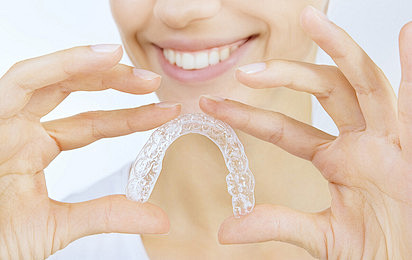1. Key Indicators of Natural-Looking Restorations
1.1 Color Matching: The Three Essentials
| Factor | Impact | Solution |
|---|---|---|
| Value | Tooth brightness | Digital shade analysis (e.g., VITA 3D-Master) |
| Chroma | Color intensity | Layered porcelain stratification |
| Translucency | Natural light diffusion | Custom ceramic layering |
Advanced Techniques:
Digital Smile Design (DSD): Preview results pre-treatment.
Fluorescence matching: Replicate natural tooth UV response.
1.2 Morphology Design Principles
Golden Proportion: Incisor width ≈ 0.618 × height.
Anatomical Realism:
Developmental lobes and marginal ridges.
Natural wear patterns.
Gingival Harmony:
Restoration margins parallel to gum lines.
Contact points at gingival 1/3 of crown.
2. Aesthetic Comparison of Restoration Options
2.1 Anterior Teeth Solutions
| Type | Thickness | Best For | Naturalness | Longevity |
|---|---|---|---|---|
| Porcelain Veneers | 0.3–0.7mm | Mild discoloration | ★★★★★ | 10–15 years |
| Full-Ceramic Crown | 1.2–2mm | Severe damage | ★★★★☆ | 12–20 years |
| Composite Veneers | 0.5–1mm | Temporary fixes | ★★☆☆☆ | 3–5 years |
Star Technique:
Hollywood Veneers: Prep-free ultra-thin porcelain (0.3mm).
2.2 Posterior Functional Aesthetics
Occlusal Anatomy:
Precise cusp slopes and fossa replication.
Gradient Shading:
Darker cervical → translucent incisal edges.
Dentin-mimicking effects.
3. Orthodontic Aesthetic Enhancements
3.1 Tooth Alignment & Facial Changes
| Issue | Improvement | Duration |
|---|---|---|
| Protrusion | Reduced lip fullness | 1.5–3 years |
| Underbite | Jaw harmony | 2–3 years |
| Open Bite | Lip competence | 1.5–2.5 years |
Facial Rejuvenation Effects:
Ideal nasolabial angle (90°–110°).
Enhanced cheek/chin support.
3.2 Appliance Choices & Social Impact
| Type | Discreetness | Comfort | Social Adaptability |
|---|---|---|---|
| Metal Braces | ★☆☆☆☆ | ★★☆☆☆ | Adjustment period |
| Ceramic Braces | ★★★☆☆ | ★★★☆☆ | Semi-invisible |
| Lingual Braces | ★★★★★ | ★★☆☆☆ | Fully hidden |
| Clear Aligners | ★★★★☆ | ★★★★☆ | Removable |
4. Post-Restoration Social Adaptation
4.1 Transition Phase
Speech: 1–2 weeks to adapt to veneers/crowns; lingual braces require practice.
Diet: Avoid hard foods (ice/nuts) and staining agents (coffee/red wine).
4.2 Special Occasions
For aligner users: Swap trays pre-event.
Photography Tips:
45° angles highlight tooth curves.
2–3mm gum display = ideal smile.
5. Maintaining Natural Aesthetics
5.1 Daily Care
Tools: Water flossers (for margin cleaning), ultrasoft brushes.
Professional Care:
Bi-annual polishing.
Non-abrasive whitening toothpaste.
5.2 Long-Term Preservation
Night Guards: For bruxism patients.
Annual Assessments:
Digital photo comparisons.
Gingival aesthetic index tracking.
Conclusion: The Era of Personalized Aesthetic Dentistry
Modern dentistry combines:
Digital Smile Design for predictable outcomes.
3D Printing for micron-level precision.
Bio-mimetic Materials replicating natural optics.
Remember: The best restoration is one that looks unrestored. Choose an experienced aesthetic dentist—your smile deserves nothing less than perfection.
Key Translation Notes:
Technical Accuracy: Terms like "value/chroma" (color theory) preserved for dental professionals.
Visual Organization: Tables compare options clearly for patient decision-making.
Cultural Adaptation: "Hollywood Veneers" retained as globally recognized term.
Actionable Advice: Practical tips (e.g., photography angles) enhance usability.
Concise Yet Comprehensive: Balances detail with readability.
This version ensures both clinical precision and patient-friendly clarity for international audiences.



.webp)


.webp)